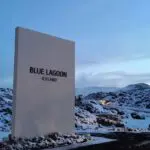From massive glacier-fed lagoons to quiet volcanic craters and charming city ponds, lakes in Iceland are as varied as the landscape itself. Whether planning a full road trip or just adding a few scenic stops to your itinerary, Iceland’s lakes offer some of the country’s most memorable views and peaceful moments.
Some are famous for their striking colour, others for their geological oddities, birdlife, or folklore. A few are tucked away in the Highlands and only accessible in summer with a 4×4, while others are just a short stroll from a Reykjavík café. They all share a strong connection to the land — shaped by volcanoes, glaciers, and shifting tectonic plates.
In this guide, we’ve grouped Iceland’s most interesting and beautiful lakes by region, with each section highlighting what makes them unique, how to reach them, and what to expect when you get there.
South Iceland & Highlands
Þingvallavatn Lake
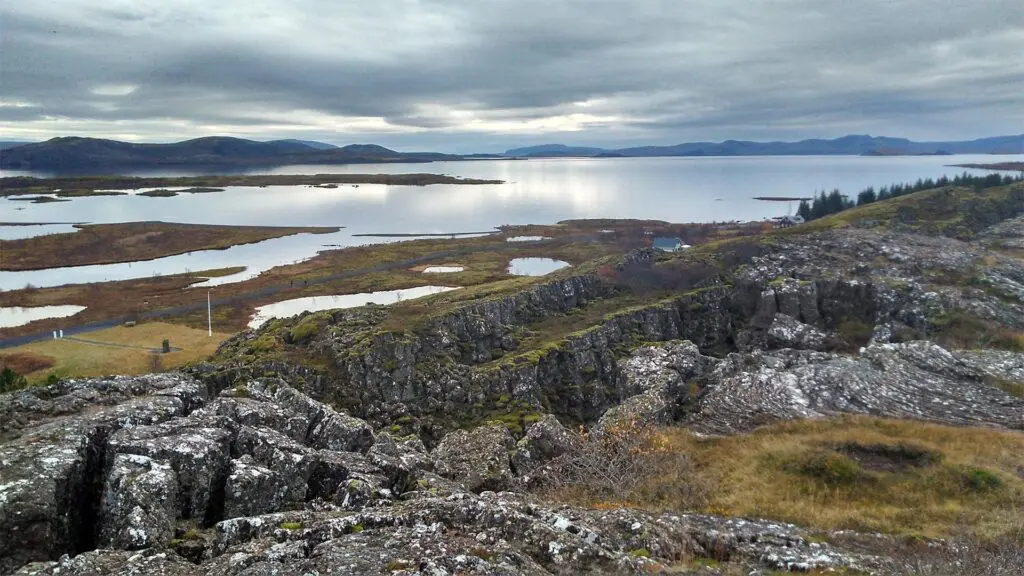
Þingvallavatn is not only the largest natural lake in Iceland, but it’s also one of the most geologically and historically significant. Located in Þingvellir National Park, this lake lies directly atop the Mid-Atlantic Ridge, where the North American and Eurasian tectonic plates pull apart. You can actually see the rift valleys cutting through the land and into the lake. Its water comes from underground springs, making it incredibly pure and clear — so much so that visibility under the surface can reach over 100 metres.
The lake is home to four unique species of Arctic char, and fishing is permitted in designated areas during the summer. One of the lake’s main attractions is Silfra, a submerged rift where you can snorkel or dive between continents. Around the lake, you’ll also find hiking paths, lava formations, and ruins from one of the world’s oldest parliaments.
Hvítárvatn Lake in Iceland
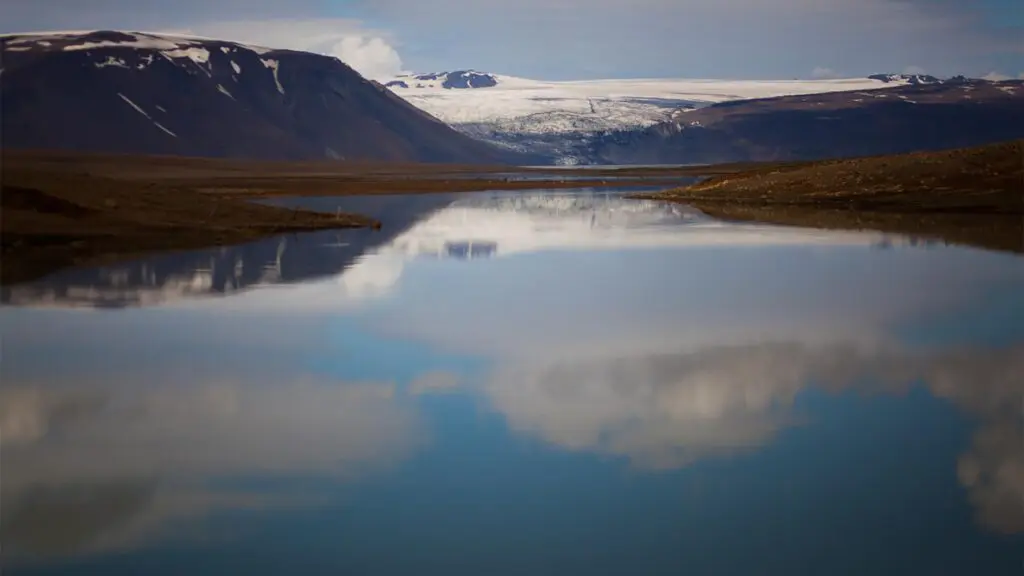
Located near the Langjökull glacier, Hvítárvatn is a glacier-fed lake in a more remote part of South Iceland. It’s the source of the Hvítá River, which eventually plunges down the Gullfoss waterfall. The lake itself is surrounded by barren, dramatic Highlands scenery, with vast plains of black sand, gravel, and the occasional mossy outcrop. On a clear day, you can see the glacier from the lake’s edge, a stark reminder of the forces that shape this landscape.
Getting there usually involves driving F-roads, which are open only in summer and require a capable 4×4 vehicle. There are no built-up tourist facilities here, but the lake’s wild beauty and the quiet surrounding it make it a memorable destination for photographers, hikers, and anyone looking to connect with nature on its own terms. The area is especially peaceful in the evenings, with pastel-coloured skies reflecting in the still, glacier-fed waters.
Langisjór Lake in Iceland
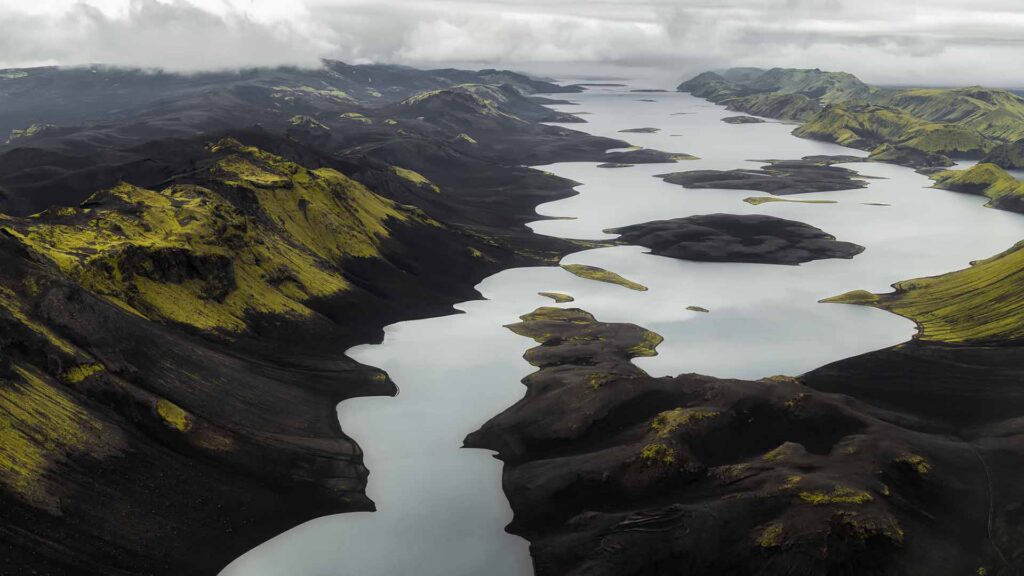
Langisjór is a long and narrow lake deep in the Highlands, south of Vatnajökull and near the volcanic ridge of Fögrufjöll. Its name translates to “long sea,” and it snakes through volcanic hills in one of Iceland’s most unspoiled areas. The lake stretches around 20 kilometres in length and varies in width from a few hundred metres to more than two kilometres. It sits at about 670 metres above sea level and is known for its deep, clear water and pristine setting.
The surrounding area is part of the Fjallabak Nature Reserve. Reaching it requires a 4×4 and travel on rugged summer-only roads such as F208 and F235. The drive in itself is an adventure, with river crossings and views of otherworldly terrain. Popular hikes in the area include the trail to the summit of Sveinstindur, a nearby mountain offering panoramic views over the lake and surrounding Highlands. Despite its remote location, Langisjór has been the subject of conservation discussions due to its untouched nature and potential for hydroelectric development — a reminder of how precious and vulnerable these places are.
Öskjuvatn Lake and Víti in Askja Volcano

Öskjuvatn is a crater lake formed inside the Askja caldera — one of Iceland’s most remote and surreal volcanic regions. Located in the Dyngjufjöll mountains, this deep, ice-cold lake sits within a vast volcanic complex in the central Highlands. At over 200 metres deep, it’s the second-deepest lake in Iceland and was formed after a massive eruption in 1875 caused the caldera to collapse.
Surrounding the lake is a stark and stunning landscape: grey volcanic ash, black sand deserts, and jagged lava flows create an almost extraterrestrial environment. In fact, NASA astronauts trained here in the 1960s to prepare for the Apollo moon missions. Next to Öskjuvatn lies Víti, a smaller explosion crater containing a milky geothermal pool. Some visitors choose to descend into the crater and bathe in the warm water, although conditions can be slippery and change quickly.
Reaching Askja is a serious undertaking and only possible in summer. Travellers must navigate several unbridged river crossings and highland tracks (F88 or F910), best done with a 4×4 and some off-road experience. Despite the difficulty, the trip is well worth it for those who want to see a side of Iceland that feels untouched, raw, and completely unlike anything else on Earth.
Reykjanes Peninsula & Capital Region
Kleifarvatn

Kleifarvatn is a large lake located on the Reykjanes Peninsula, just a short drive from Reykjavík. Surrounded by steep hills and volcanic sand, it’s a striking, quiet place that feels far removed from city life. The lake is nestled in a fissure zone where the Earth’s crust is actively pulling apart, and the surrounding terrain shows signs of geothermal activity, especially near the nearby Krýsuvík geothermal area.
Earthquakes in the early 2000s caused a dramatic drop in the lake’s water level, revealing geothermal vents and strange mineral patterns along the shore. Though the water has since returned to its previous levels, the lake still feels dynamic and alive. There are hiking trails around the lake and in the nearby geothermal areas, offering visitors an easy and scenic way to explore Iceland’s volcanic heartland without straying too far from Reykjavík. In winter, the area often freezes over and is equally beautiful under snow.
Tjörnin
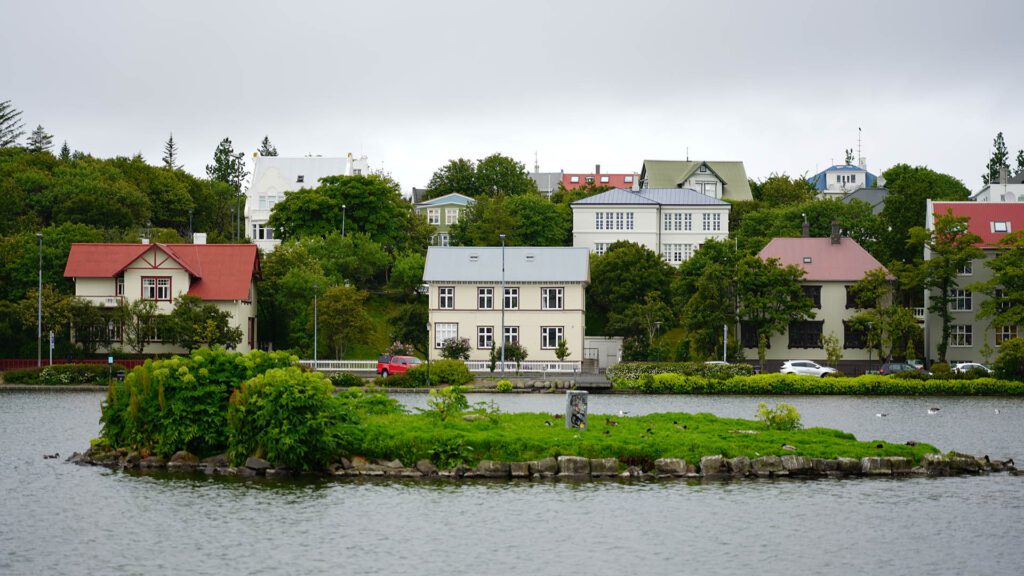
Tjörnin is a small, shallow lake right in the heart of Reykjavík. Though it’s technically more of a city pond, it plays a big part in daily life for locals. Bordered by footpaths, grassy areas, and colourful historic buildings, it’s the perfect place to take a walk, sit with a coffee, or watch birdlife. Dozens of bird species gather here, including Arctic terns, swans, geese, and ducks — many of which are surprisingly tame thanks to years of being fed by city dwellers.
The lake is surrounded by key institutions like City Hall, the National Gallery, and the parliament offices. In winter, the surface often freezes and is used for ice skating. Despite being right in the middle of the capital, Tjörnin maintains a calm and welcoming atmosphere that makes it more than just a scenic stop — it’s a daily part of the city’s rhythm. It’s also especially photogenic at sunset or during winter’s brief but colourful twilight hours.
North Iceland
Mývatn

Mývatn is one of the best-known lakes in Iceland and a hotspot for both birdlife and geological wonders. Formed by volcanic eruptions over 2,000 years ago, it’s surrounded by lava fields, pseudocraters, and geothermal areas that make the entire region feel surreal and dynamic. In summer, the lake is swarming with midges — tiny flies that are a nuisance to people but essential to the local ecosystem. These midges feed a variety of birds, making Mývatn one of the best places in Europe for birdwatching, especially for duck species.
The lake is shallow and rich in nutrients, which supports the thriving birdlife and unique algae blooms. Notable sites nearby include the lava towers of Dimmuborgir, the bubbling mud pots of Hverir, and the warm, mineral-rich waters of the Mývatn Nature Baths. You can easily spend a full day or more exploring the region on foot or by car. Accommodation and services are readily available in the nearby village of Reykjahlíð, making Mývatn a convenient yet stunning stop for Ring Road travellers.
East Iceland
Lagarfljót

Lagarfljót is a long, glacier-fed lake near Egilsstaðir, flanked by forests and hiking trails. At 25 kilometres long and quite narrow, the lake carves its way through one of the few forested areas in Iceland — Hallormsstaðaskógur — making it feel very different from the treeless expanses that dominate most of the country. It’s associated with Icelandic folklore, particularly the legend of the Lagarfljót Worm, a sea monster said to live in its depths. Stories of sightings go back centuries, and the creature remains a favourite local myth.
The lake’s eastern shore provides access to one of Iceland’s tallest waterfalls, Hengifoss, which cascades down a cliff striped with red clay and basalt. It’s reached via a scenic trail that passes another smaller waterfall, Litlanesfoss, framed by towering basalt columns. The area around Lagarfljót is ideal for hiking, fishing, and camping, especially in summer. Because of its proximity to Egilsstaðir, it makes for a convenient base when exploring the East Fjords.
Southeast Iceland
Jökulsárlón

Though technically a glacier lagoon, Jökulsárlón is one of Iceland’s most iconic lake-like landscapes. Icebergs from the Breiðamerkurjökull glacier break off and float slowly through the lagoon before reaching the ocean. These ice chunks range in colour from bright white to deep blue, creating an ever-changing landscape of drifting sculptures. The lake has grown significantly over recent decades as the glacier retreats due to climate change.
Visitors can take boat tours to get closer to the icebergs or simply walk along the shore and watch seals swimming among them. Just across the road is Diamond Beach, where ice fragments from the lagoon wash up on the black sand and glisten like crystals. The area is popular with photographers, especially at sunrise and sunset. Jökulsárlón is right off the Ring Road and easily accessible year-round, making it one of the country’s most visited and memorable sights.
Bonus: More Notable Lakes
Bláhylur (Hnausapollur)

A brilliant blue crater lake near Landmannalaugar, easily accessible by 4×4 in summer. Its vivid colour and surrounding red slopes make it highly photogenic.
Álftavatn

Nestled in the Highlands along the popular Laugavegur hiking trail, Álftavatn (“Swan Lake”) is a wide, scenic lake often used as a campsite for multi-day trekkers. The backdrop of rhyolite mountains and open tundra makes it one of the more visually dramatic spots on the trail.
Grænavatn (Reykjanes)

Grænavatn, or “Green Lake,” is a small explosion crater lake on the Reykjanes Peninsula. Its vivid green colour comes from minerals and algae, and it’s easily accessible from Route 42. The lake lies in a geologically active area and is often combined with visits to nearby hot springs and mud pots.
From world-famous glacier lagoons to hidden craters, the lakes of Iceland are as diverse as the landscapes they sit in. Whether you’re after peaceful moments, dramatic views, or a chance to explore somewhere off the beaten track, there’s a lake in Iceland for every kind of traveller.









